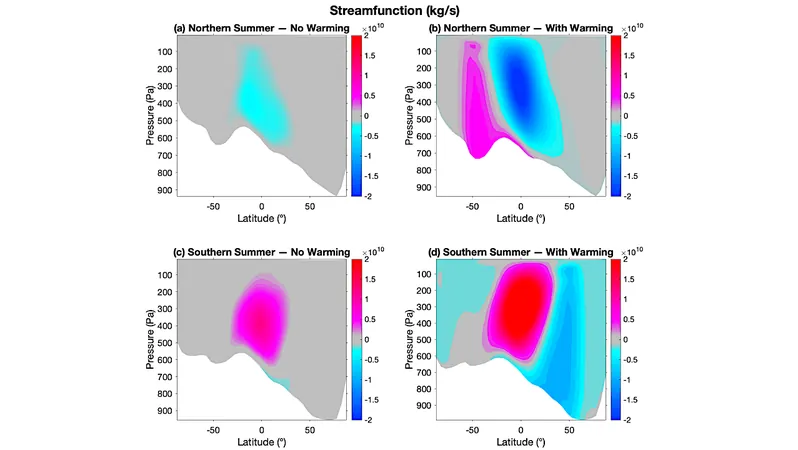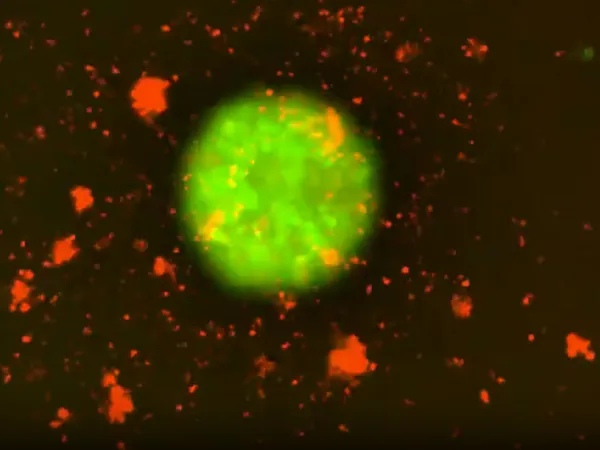
The Pioneering Steps Towards Terraforming Mars: A Climate Revolution?
2025-04-03
Author: Yu
Introduction
As humanity sets its sights on the daunting task of terraforming Mars, researchers believe that warming the planet's surface could be the first vital step in transforming it into a habitable environment. However, this monumental undertaking presents not just scientific hurdles but also complex engineering challenges that scientists are eager to tackle.
Innovative Approaches to Warm Mars
Recent studies highlight the innovative use of engineered aerosols to warm the Martian atmosphere. By strategically releasing particles into the air, scientists hope to achieve a planet-wide increase in temperature. This requires an understanding of how winds will transport these aerosols, which react to their own radiative forcing, thereby creating intricate feedback loops that influence climate dynamics.
Research Findings on Aerosol Compositions
Researchers employed a specialized climate model—excluding water cycle interactions—to explore the effects of two specific aerosol compositions: graphene, known for its UV attenuation properties, and aluminum. Remarkably, both materials could induce rapid global temperature increases of approximately 30 Kelvin.
The Role of Graphene in Greenhouse Effects
Interestingly, the researchers discovered that producing graphene at a rate of 2 liters per second from the Martian atmosphere through CO2 electrolysis could potentially double the greenhouse effect, leading to an additional warming of about 5 Kelvin. This process is further aided by a phenomenon referred to as self-lofting, whereby particles naturally rise and disperse throughout the atmosphere.
Implications of Warming on Atmospheric Dynamics
Additionally, warming strengthens the Hadley cell—a wind system that can help in mixing atmospheric compositions more effectively. It appears that by adjusting the size of the particles, scientists can further focus the warming effects on specific latitudes.
Challenges Ahead
While the encouraging results from this model illustrate the potential for engineered aerosols to facilitate warming on Mars, numerous challenges lie ahead. Researchers still need to address issues related to functionalization, agglomeration, and the design of experiments to study dry deposition. Furthermore, understanding feedbacks involving water cycles remains a complex but crucial component of the terraforming puzzle.
Conclusion
The quest to transform Mars is not just an exploration of science; it’s a monumental venture that could redefine humanity's place in the cosmos. As advancements continue, the dream of a livable Mars might just be within our grasp. Stay tuned for more groundbreaking discoveries in our journey to unlock the secrets of the Red Planet!




 Brasil (PT)
Brasil (PT)
 Canada (EN)
Canada (EN)
 Chile (ES)
Chile (ES)
 Česko (CS)
Česko (CS)
 대한민국 (KO)
대한민국 (KO)
 España (ES)
España (ES)
 France (FR)
France (FR)
 Hong Kong (EN)
Hong Kong (EN)
 Italia (IT)
Italia (IT)
 日本 (JA)
日本 (JA)
 Magyarország (HU)
Magyarország (HU)
 Norge (NO)
Norge (NO)
 Polska (PL)
Polska (PL)
 Schweiz (DE)
Schweiz (DE)
 Singapore (EN)
Singapore (EN)
 Sverige (SV)
Sverige (SV)
 Suomi (FI)
Suomi (FI)
 Türkiye (TR)
Türkiye (TR)
 الإمارات العربية المتحدة (AR)
الإمارات العربية المتحدة (AR)